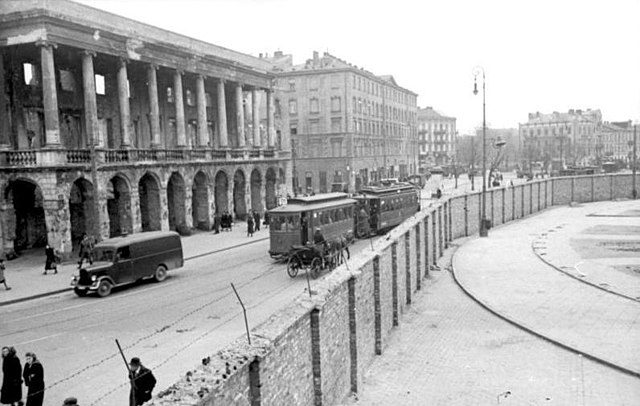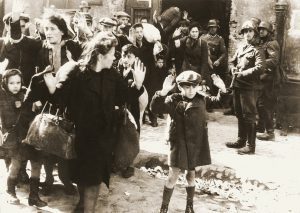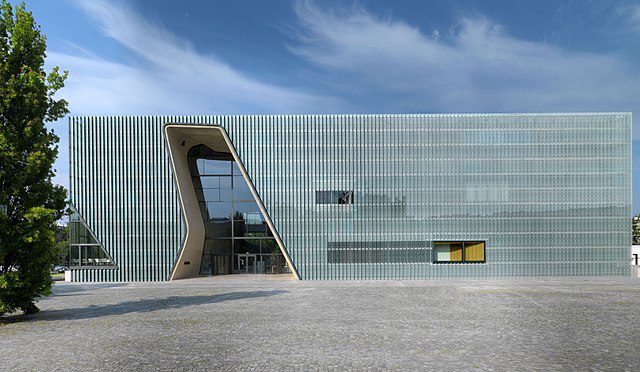The Warsaw Ghetto was a curtailed region of Poland that suffered greatly at the hands of Adolf Hitler and Nazi Party members during World War II. Many people died as a result of the Nazis’ regime in Poland – and it’s important that we remember the struggles people went through to finally escape the horrors of war. Here are some important facts about the Warsaw Ghetto.
1. It was created by the Nazis.
The Warsaw Ghetto was created and established by the Nazi German authorities in October 1940. It was one of the largest Jewish ghettos created during the Holocaust to “house” the Jewish population Hitler and his forces strove to exterminate.
2. It was located in Poland’s capital.
The Ghetto was located in the city of Warsaw, the area after which it was named. The city was the capital of Poland at the time.
3. Hundreds of thousands of people lived there.
At its height, the population of the Warsaw Ghetto was estimated to be over 400,000 Jewish people. This meant that it was one of the most densely populated areas in Europe at that time.

4. It suffered from overcrowding.
The Ghetto was extremely overcrowded. It had severe housing shortages, inadequate sanitation, and limited access to food and medical care. These conditions led to widespread suffering and death.
5. It was sealed off from the rest of the city.
Warsaw’s Ghetto was separated from the broader city by a high wall lined with barbed wire and guarded by German soldiers. Movement in and out of the Ghetto was severely restricted, meaning thousands of people were trapped.
6. Starvation was a genuine risk in the Warsaw Ghetto.
Hunger, malnutrition, and disease were rampant in the Warsaw Ghetto due to the scarcity of food and medical supplies. Thousands of residents died from starvation and illness as the Nazis continued to curtail them.
7. An uprising eventually took place to fight against the oppression.
The Warsaw Ghetto Uprising began on April 19, 1943, when Jewish residents, armed with limited weapons, resisted the Nazis’ efforts to deport them to concentration camps. The uprising lasted for nearly a month. The Jewish Combat Organization (ŻOB) and the Jewish Military Union (ŻZW) were the two main resistance groups that led the Warsaw Ghetto Uprising.
8. The Nazis deported residents to concentration camps.
Before the uprising, the Nazis had conducted several deportations from the Ghetto to extermination camps. They were sent to camps such as Treblinka, where the majority of deportees were killed.
9. The Ghetto was eventually destroyed.
Following the suppression of the uprising, the Nazis systematically demolished the Warsaw Ghetto, destroying it building by building to erase any trace of its existence. Yet, we still remember the atrocities that took place here.

10. Today, it is a symbol for Jewish communities around the world.
Today, the Warsaw Ghetto is remembered as a symbol of Jewish resistance and suffering during the Holocaust. Several monuments and memorials stand in its memory in Warsaw. For example, the Warsaw Ghetto Uprising Monument, designed by sculptor Nathan Rapoport was unveiled in 1948 to honour the heroes of the uprising.
11. There is an educational centre in the area.
The POLIN Museum of the History of Polish Jews, located near the former ghetto area, serves as an educational centre and memorial. It is dedicated to preserving the history and memory of Jewish life in Poland.

FAQs about the Warsaw Ghetto
Can you visit the Warsaw Ghetto?
Yes, you can still visit the Warsaw Ghetto. In fact, you can book a two-hour walking tour of the area. It is a fascinating yet devastating exploration of atrocities that, unbelievably, took place within a century ago.
Why did the Warsaw Uprising fail?
The Warsaw Uprising was not successful in part due to a lack of coordination. The brutal German response also squashed the uprising. Post-uprising, the Ghetto was destroyed by the Nazis themselves.
How much of Warsaw was destroyed in World War II?
It is believed that over 85% of Warsaw was destroyed during World War II. Thankfully, the city and community has since rebuilt itself and is thriving as a modern Polish metropolis.
Further reading
https://facts.uk/tag/Nazi/
https://encyclopedia.ushmm.org/content/en/article/warsaw-ghetto-uprising
https://www.iwm.org.uk/history/daily-life-in-the-warsaw-ghetto
Do you know any interesting facts about the Warsaw Ghetto? Share them in the comments below!










